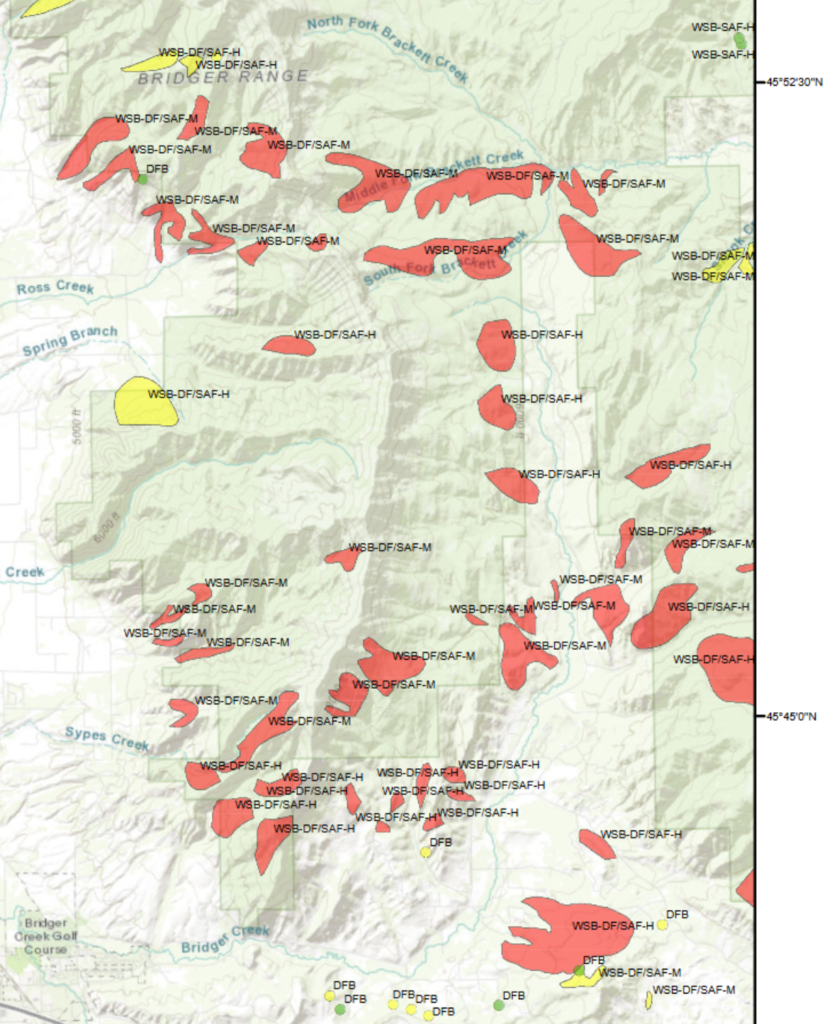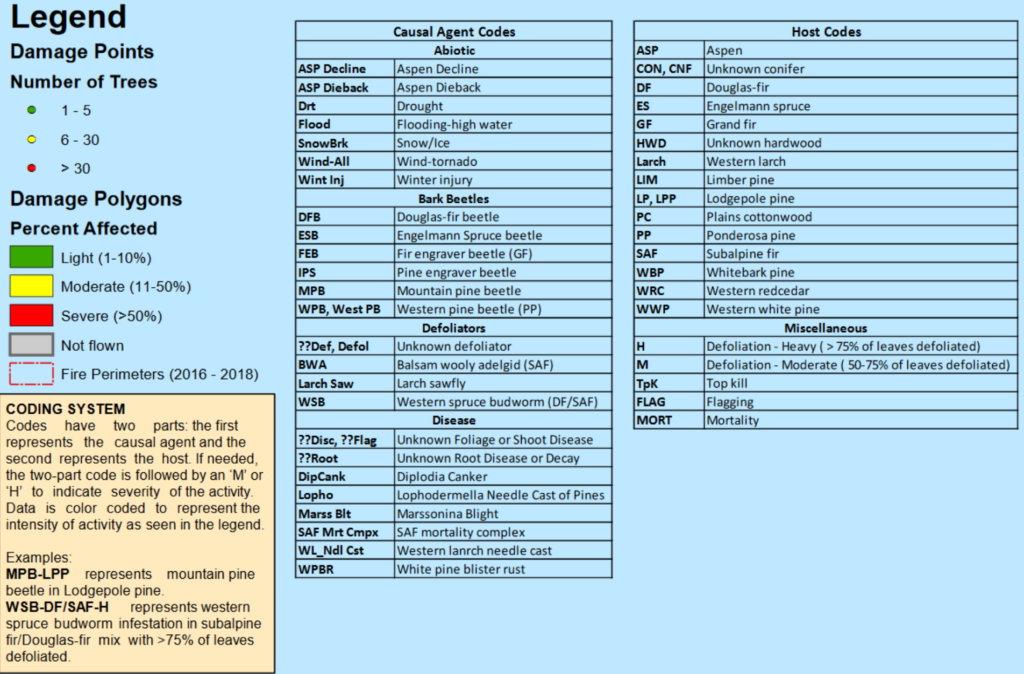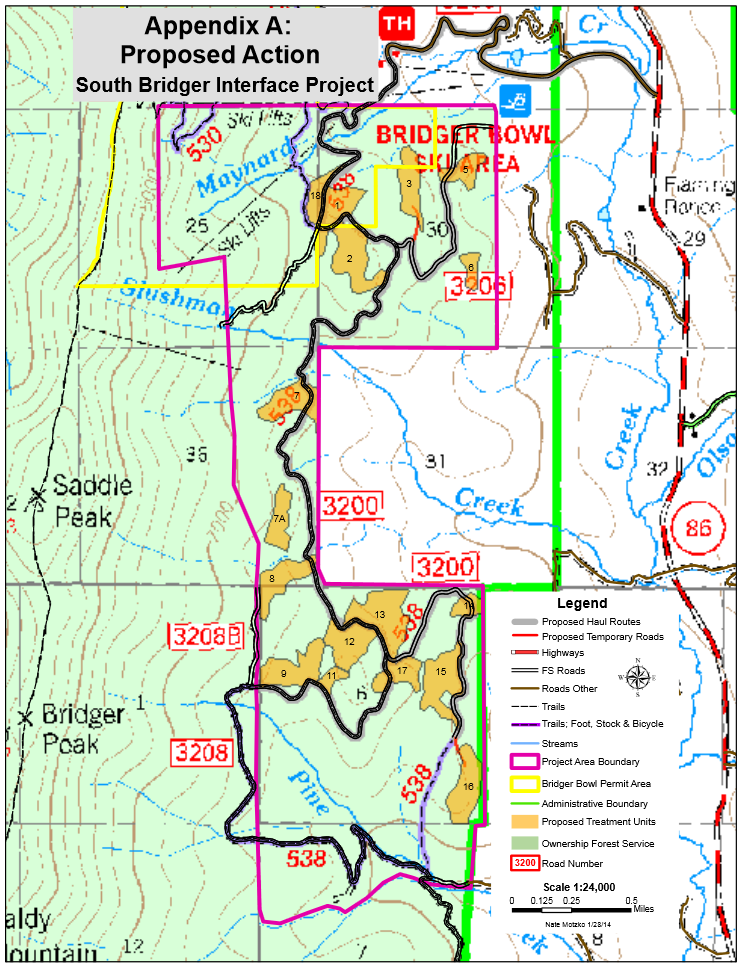This page collects information on spruce budworm control. Comments are active, so feel free to respond below.
[Note: this was originally published May 13, 2013, but has been updated and reposted.]
Protocol
Aerial spraying of Bt is not a risk-free proposition, particularly for immune-compromised individuals. Overspray can be carried over large areas. (See discussion below.)
As a basic courtesy, please let your neighbors know when spraying is to occur, so that they can take precautions. A phone call, visit, or note in the mailbox is probably best, but many residents would also appreciate a note to the canyon email list. (If your message bounces, send it to tom at metasd dot com and I’ll post it.)
Bt information
Former BCPOA Director Joan Cory compiled this summary of the state of Bt knowledge, when aerial spraying was planned in 2007:
20070508 Bt overview1.pdf
The short version is that Bt is widely regarded as safe, but has not been well studied, and poses a risk to humans and pets in some conditions. Resistance and collateral damage to beneficial species are to be expected. A crucial bit is:
SAFETY CONSIDERATIONS. NOTIFY YOUR NEIGHBORS if you are going to spray. Studies have shown that Bt can be quite widespread outside of aerial spray zones and can be a concern for certain groups of individuals (see below). Because of the potential for infection of humans and other organisms, it is reasonable to inform your neighbors so that they can stay inside or evacuate to town for a period of time around the spraying.
In 2007, we used the email list to to distribute notice the evening before Boyd Morgan was to fly – we could easily do that again this year.
Comment from Matthew Broughton 3 Fiddles Farm
Matthew Broughton here of 3 Fiddles Farm-the only organic farm in Bridger Canyon
I want to preface my comments with the fact that I attended MSU’s Masters Program in Entomology in the early 2000’s, I was a research associate at MSU for 7 years studying, specifically, plant-insect interactions and biological-control, and I am an ardent Organic Farmer. I know that Bt is currently allowed for organic production, which I feel is a mistake. Natural balance needs to be obtained, not heavy handed controls. I am sad to hear that canyon wide spraying is being planned. This posses a huge risk to all beneficial Lepidopteran (moths and butterflies, including caddis flies in the stream.) and will impact the whole ecosystem, including the predators of the budworms.
This will not eradicate the Budworm, it will only be a short term control measure. This is also setting up the dangerous treadmill of continuous control measures, year after year. Be aware that some of the advice being given to you is by the companies and people who profit from the sale of the product and should be dubiously accepted.
A quick review of Colorado Extension Service advice for controlling Budworm outbreaks is as follows.
Control
Budworm populations usually are held in check by a combination of predators, parasites, adverse climatic conditions, or inadequate food supply. Spiders, insects and a variety of birds are important predators. Adverse weather conditions, particularly sudden freezes in late spring, may kill large numbers of larvae. A major factor in ending long-term outbreaks appears to be starvation from inadequate or nutritionally poor food sources. However, this may not be a factor in urban situations. Cultural practices such as thinning, watering and fertilizing, which promote tree vigor, may help trees better withstand repeated attacks.
I also want to point out that there are wide spread suspicions that Bt exposure has many negative health effects for humans and vertebrates, including leaky gut syndrome, inflammation(resulting in a myriad of diseases) and genetic damage from exposure. Little studies have been completed due to pressures on the EPA and FDA to allow its use, and thus there are no long term and real human health studies, just a few low number preliminary studies. There are many dangerous data gaps on the safety of this product. As a result of the minimal short-term toxic exposure risks, this “natural” product was exempted from long term studies. I would like to point out that many “natural” products are quite dangerous long term i.e. asbestos, lead, uranium, tritium, etc.
On our property we have several spruce trees that were affected by the budwroms and we increased their watering, and the trees recovered and resisted damage. A cheap, easy, and safe fix.
Assessment of 2010 spraying at Bridger Bowl
This USDA Forest Service report documents the results of Bt spraying at Bridger Bowl in 2010:
BB spray assess stelprdb5400238.pdf
An excerpt:
On September 12-13, 2011 we returned to Bridger Bowl to evaluate the effectiveness of
the B.t. treatment. Ocular defoliation estimates showed that trees that had been
sprayed had significantly lower percentage of their foliage consumed by budworm.
There was approximately a 1/3 reduction in defoliation for the treated trees when
compared to trees in the nearby untreated area. Percentage of buds with evidence and
damage from budworm was also significantly lower in the treated trees compared to
nearby untreated trees.
…
The establishment of a younger size class in both pine and fir-dominated stands is
critical to the success of forest resiliency over time. Currently, most of the forests at
Bridger Bowl are mature and over-mature stands of pine and fir that are not sustainable
over the long-term.
Although western spruce budworm is a native insect that has co-evolved with western
spruce-fir forests, extensive damage and mortality from budworm can occur especially
during drought periods and in areas where fire has been suppressed. Suppression
actions such as spraying B.t. at Bridger Bowl may become necessary again if defoliation
from budworm is severe and occurs over multiple years. Protecting foliage with B.t. is a
temporary solution to reducing defoliation, growth loss, deformation, and tree
mortality. Silvicultural treatments that reduce stocking density, number of canopy
layers, and increase individual tree vigor and species composition are the only long-term
solution to budworm management. The need for spraying in the future should be
greatly reduced if silvicultural treatments continue to be implemented at Bridger Bowl.
[google-map-v3 width=”350″ height=”350″ zoom=”12″ maptype=”roadmap” mapalign=”center” directionhint=”false” language=”default” poweredby=”false” maptypecontrol=”true” pancontrol=”true” zoomcontrol=”true” scalecontrol=”true” streetviewcontrol=”true” scrollwheelcontrol=”false” draggable=”true” tiltfourtyfive=”false” addmarkermashupbubble=”false” addmarkermashupbubble=”false” addmarkerlist=”45.817635° -110.899450°{}jetfighter.png{}Bt budworm spray assessment” bubbleautopan=”true” showbike=”false” showtraffic=”false” showpanoramio=”false”]
 Most of the damage is identified as WSB-DF/SAF-H = Western spruce budworm in Douglas Fir/Subalpine Fir with heavy defoliation. There’s also some DFB = douglas fir beetle, mainly around Green Mountain and Kelly Canyon.
Most of the damage is identified as WSB-DF/SAF-H = Western spruce budworm in Douglas Fir/Subalpine Fir with heavy defoliation. There’s also some DFB = douglas fir beetle, mainly around Green Mountain and Kelly Canyon.




 Twitter
Twitter Facebook
Facebook RSS
RSS Email
Email